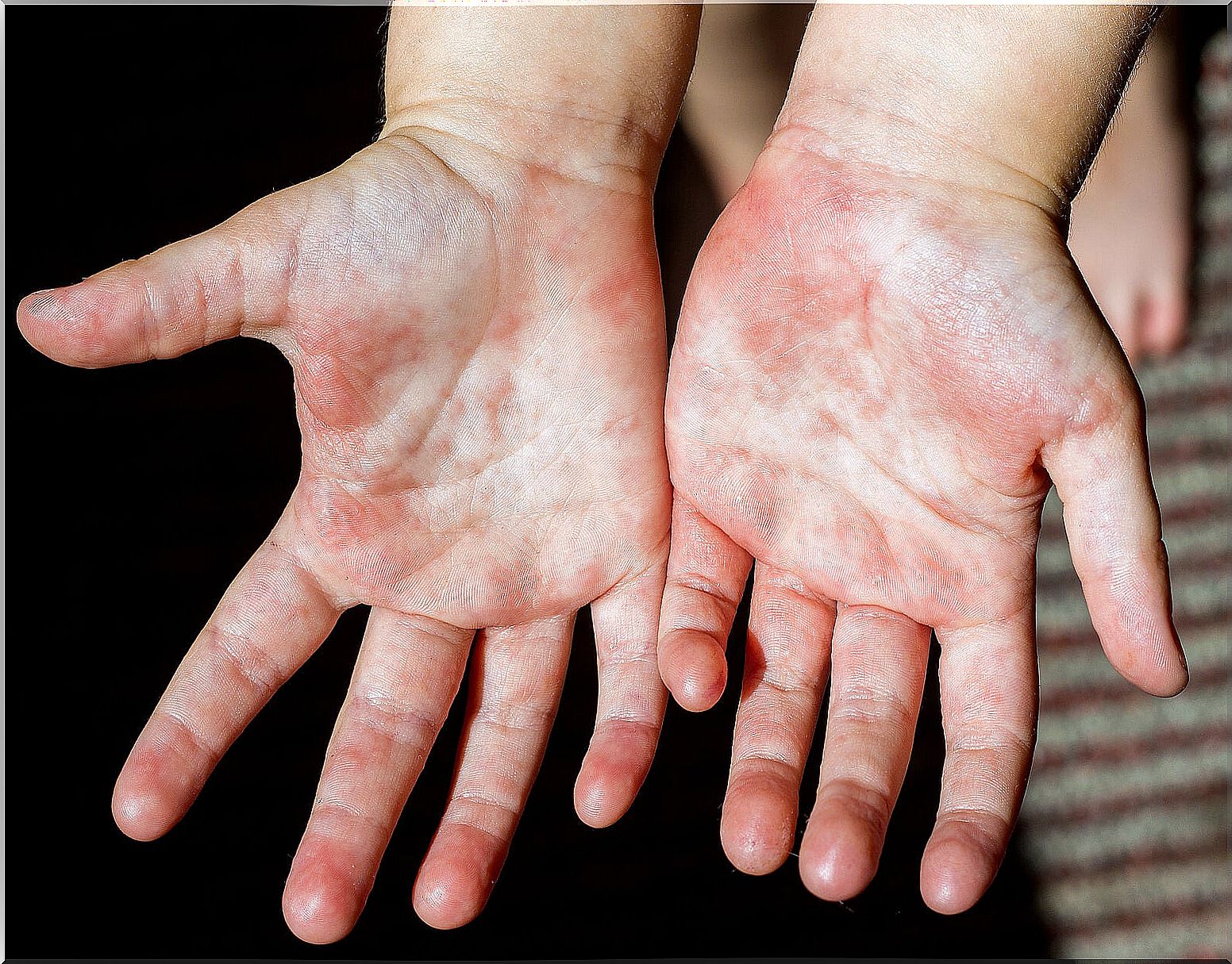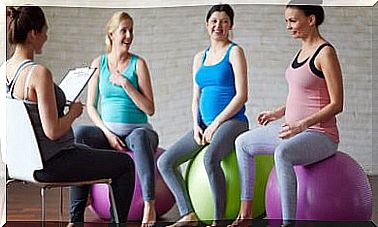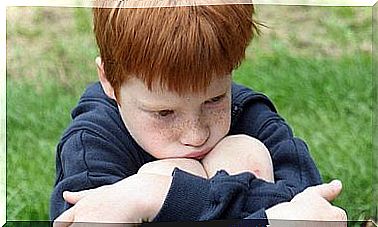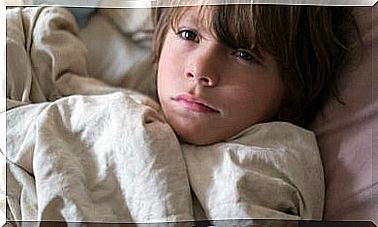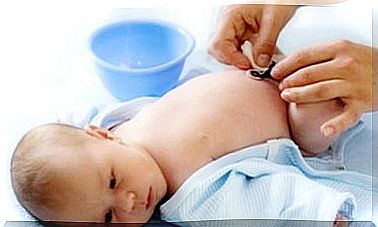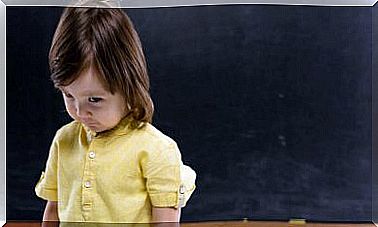Dyshidrosis In Children: Symptoms And Causes
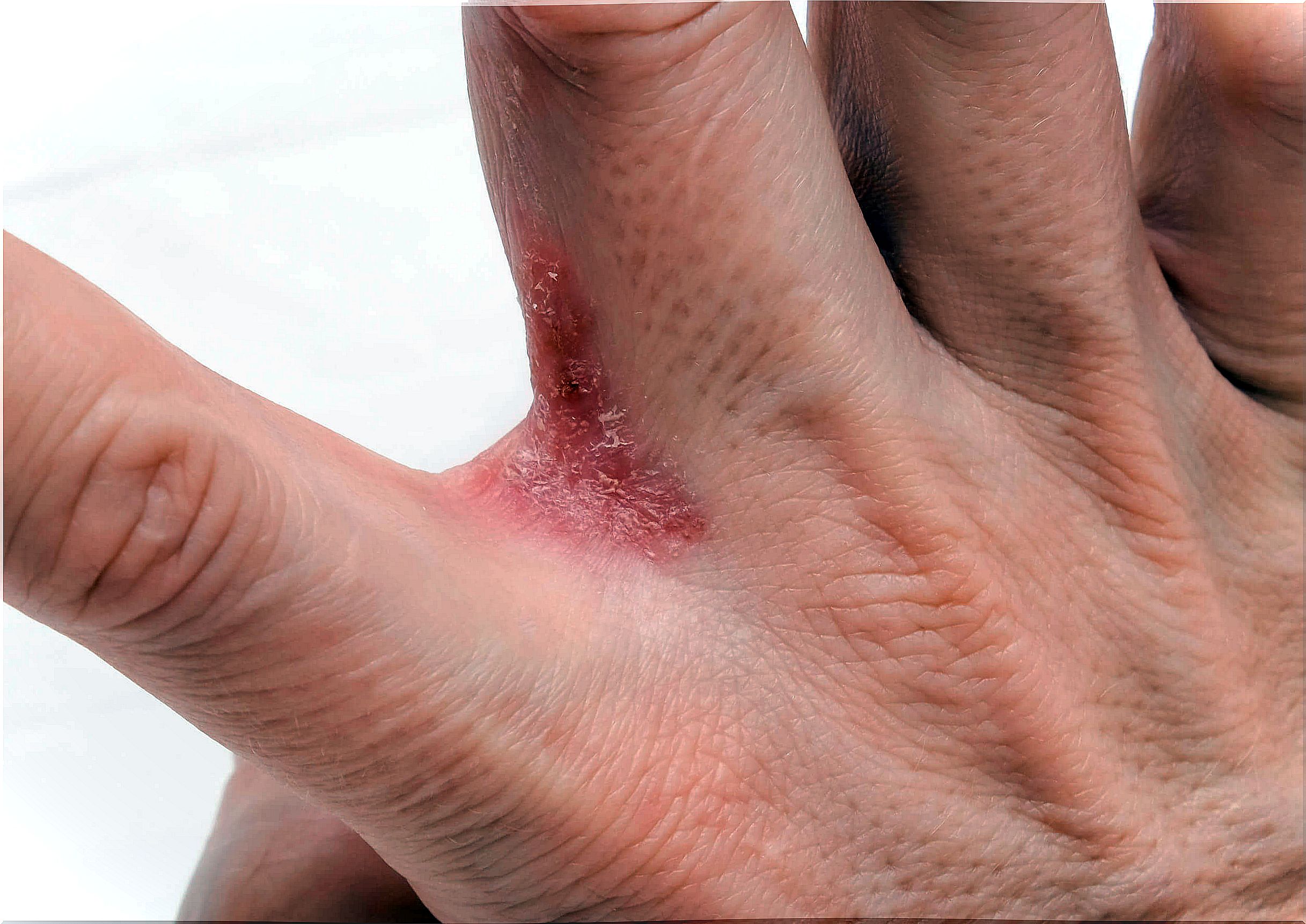
Dyshidrosis in children is not a common condition to diagnose. Although it is a pathology that resolves spontaneously, it must be addressed quickly so as not to interfere with the child’s quality of life and generate complications in the future.
It is characterized by having a chronic and recurrent pattern in which it begins with pruritic vesicles until it reaches a stage of desquamation.
Why is palmoplantar dyshidrosis triggered?
Some published studies report that the main cause of this pathological picture is the obstruction of the sweat duct.
However, other publications rule out the association between sweat glands and this dermatosis. There are several causes that would be considered as causative agents to be able to address a specific and more effective treatment. Some of them are the following:
- Fungal infections.
- Self-sensitizing dermatitis.
- Hyperhidrosis.
- Reaction to drugs.
- Contact allergy (irritative or allergic).
- Atopy.
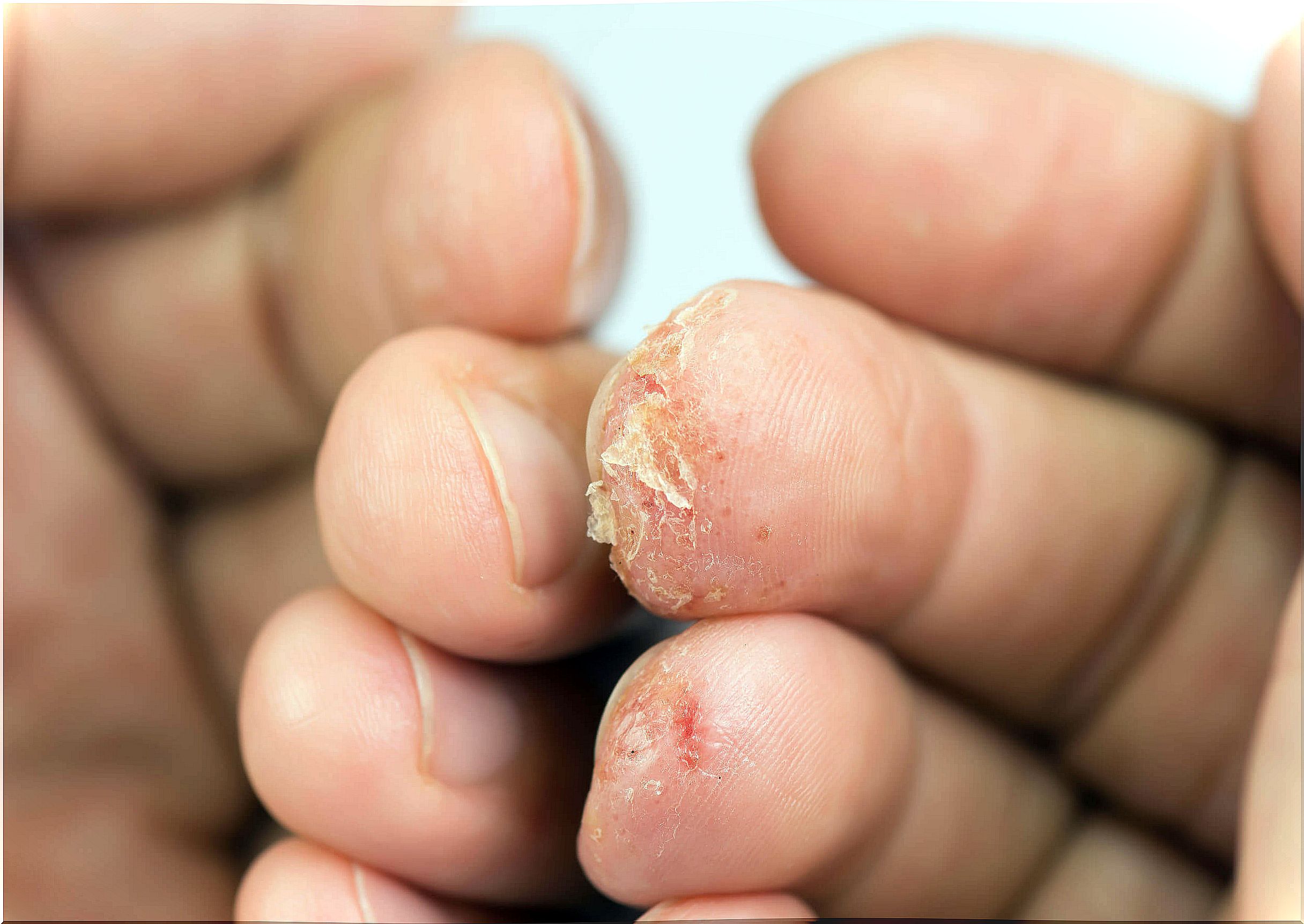
Close up of skin allergy problem, blisters filled with fluid and itchy.
However, the origin of this cutaneous manifestation is uncertain and a great influence is attributed to stress, allergic predisposition and atopic dermatitis.
It occurs not only in children, but also in adults and, more often, in young adults, between the ages of 20 and 40. However, in infants, itching causes discomfort that makes daily activity impossible, moments of falling asleep and alters the quality of life.
Symptoms of dyshidrosis in children
Dyshidrosis is characterized by an eruption of symmetrical, non-erythematous blisters or vesicles along the sides of the fingers, in plantar or palmar areas. Even small vesicles can coalesce and form blisters.
In severe cases, the blisters can break and drain, making the skin dry, cracking, and causing pain. The hands and both feet are involved symmetrically. Thus, the lesions have the following characteristics:
- Flat.
- Pruritic.
- Round.
- Pink or red.
- They can progress to even bigger injuries.
As well as the appearance of the lesions is abrupt, the Spanish Academy of Dermatology and Venereology indicates that it resolves spontaneously within 1 to 2 weeks of the appearance of the outbreak.
This is why, in most cases, dyshidrosis does not usually evolve into more serious symptoms or complications, only discomfort or pustules with mild erythema on the skin surface, the product of a secondary infection.
Severity of dyshidrotic eczema
Dyshidrosis is a manifestation of the benign and self-limited skin surface in time. However, the severity that it can present is diagnosed with the child’s symptoms and with the intensity of the vesicles that appear.
- Mild to moderate dyshidrosis : this type of severity does not affect the entire skin surface of the soles of the feet or the palms of the hands. In addition, only a small number of vesicles appear that can be grouped or scattered, with no evidence of redness in the area. The child does not present discomfort in this regard, does not complain of itching, pain or burning.
- Severe dyshidrosis : the picture is much more flowery and affects the entire palmar or plantar surface. In turn, the itching suffered by the child is very intense and leads him to scratch constantly and strongly, which generates fissures in the skin, susceptible to secondary infections. The vesicles also tend to be large, along with blisters, which make the infant unable to continue with his usual activity (walking or using his hands to perform tasks).
Sleep may be disturbed in children with severe itching. Bacterial superinfection of the lesions is a frequent finding. Contact with detergents, solvents or water can aggravate the clinical picture.
Differential diagnosis
Both a clinician and a dermatologist can diagnose dyshidrosis based on visual examination of the lesions and their location.
However, a differential diagnosis should be made between different pathologies, since this type of manifestation on the skin is shared by other diseases.

- Contact dermatitis (irritative or allergic).
- Dermatophytosis.
- Palmoplantar psoriasis.
- Juvenile palmoplantar dermatosis.
- Palmar hyperkeratotic dermatitis.
- Atopic dermatitis.
Patch testing or skin biopsy may be used to confirm the diagnosis. However, there are very few occasions in which this practice is used.
Final thoughts on dyshidrosis in children
Dyshidrosis in children is also known as dyshidrotic eczema. It is an inflammatory and chronic disease that is usually not serious. In addition, it is not contagious and can occur with outbreaks and remission.
It is advisable, before any sign or symptom, to go to the specialist doctor to make the correct diagnosis and indicate the specific measures to follow. According to the clinical manifestations at the time of the visual examination, the doctor will indicate topical treatments or more advanced measures.
